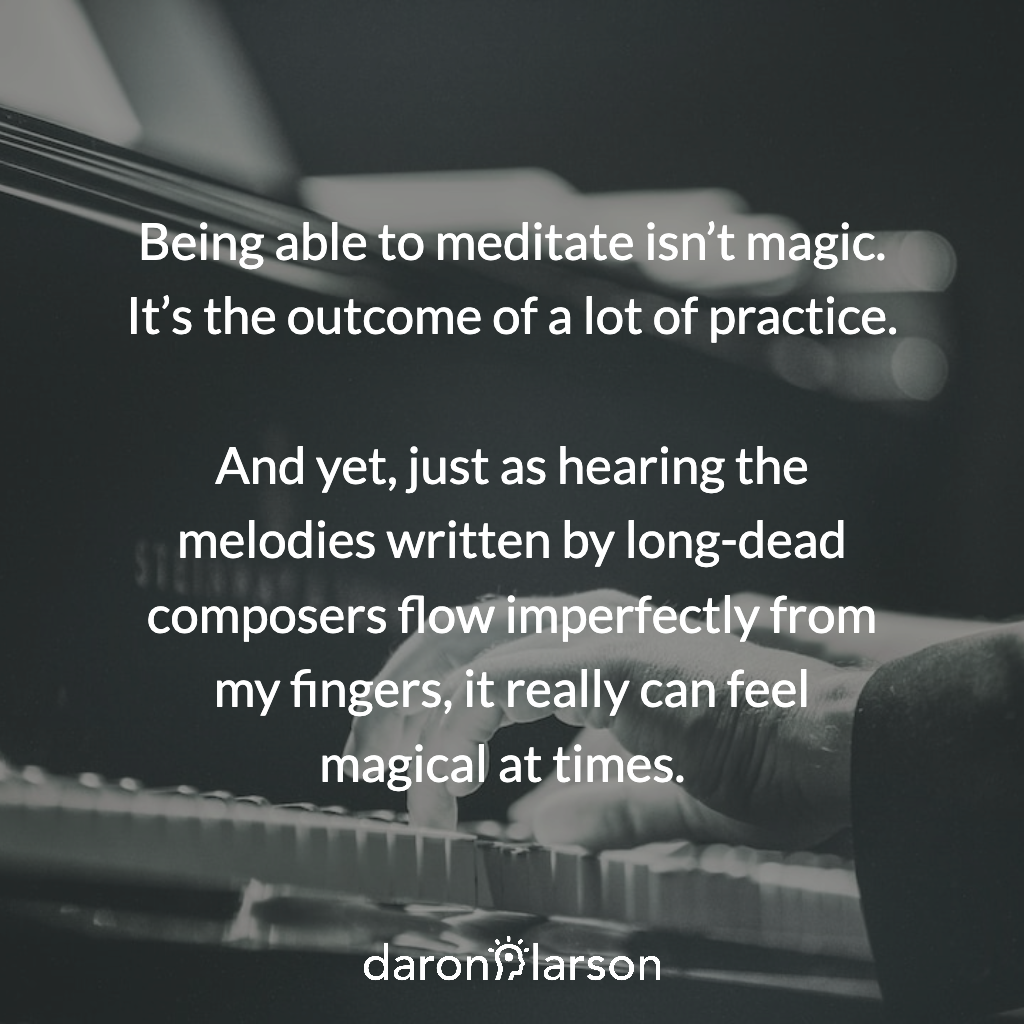Pay Attention for a Few Seconds and Repeat
Mindfulness meditation has a lot in common with practicing the piano.
Both require clear instruction, consistent effort, and falling in love with the process instead of obsessing over the results. They are also both about finding tangible ways to navigate the abstract murkiness of time.
Learning a new piece of music involves slowing down and counting out the rhythm represented by the notations on the page. Sometimes I have to work on decoding each hand’s part independently before I can start to play them together. This is the only way I can learn Bach’s mind-blowing little two-part inventions.
I’ve been working on Debussy’s Clair de Lune for a while, and I was surprised by how tricky it was to count out parts of its familiar melody. Without this step, I was just guessing, and my teacher picked up on it right away.
Counting provides a scaffolding to build the music on. Over time, it seems like the music gets into my fingers and ears demanding less reliance on the counting. But it’s not unusual to need to keep mentally counting out trickier passages or to bring the audible counting back to tighten a piece back up.
I rely on something remarkably similar in my formal meditation practice. Mindful noting involves paying close attention to specific perceptions for a few seconds at a time. Labeling refers to using a word or short phrase to support mindful noting. You’ve probably tried something like this by saying to yourself “in” as you inhale and “out” as you exhale.
I attribute the longevity and richness of my daily mindfulness routine to the flexible, multi-sensory version of this technique I learned from Shinzen Young. As with counting out musical beats, mental and spoken labels can be abandoned and picked back up whenever their support is required.
After two decades of practice, I’m still rarely able to rest my attention on any perception for more than a handful of seconds. Luckily, this isn’t a problem, because I can string individual “notes” together — e.g., sights, sounds, body sensations — for longer durations.
Being able to meditate isn’t magic. It’s the outcome of a lot of practice. And yet, just as hearing the melodies written by long-dead composers flow imperfectly from my fingers, it really can feel magical at times.
Just as not everyone has an interest in learning to play a musical instrument, not everyone will want to strengthen the awareness of their senses, thoughts, and feelings.
But anyone who has the curiosity and willingness to exercise their attention consistently can discover for themselves how much more alive ordinary moments can feel.
If this is something you’d like to explore, I can help.

